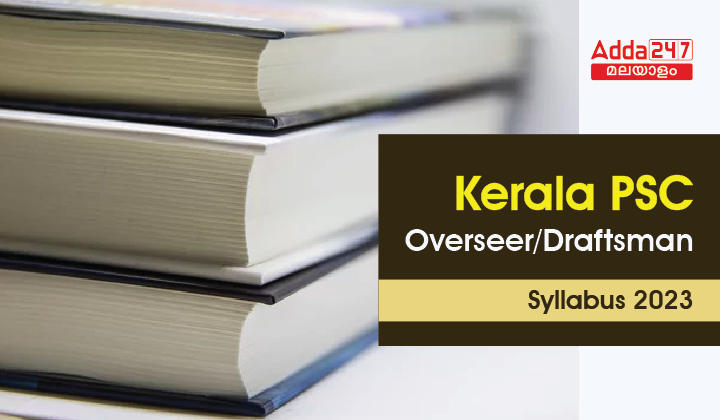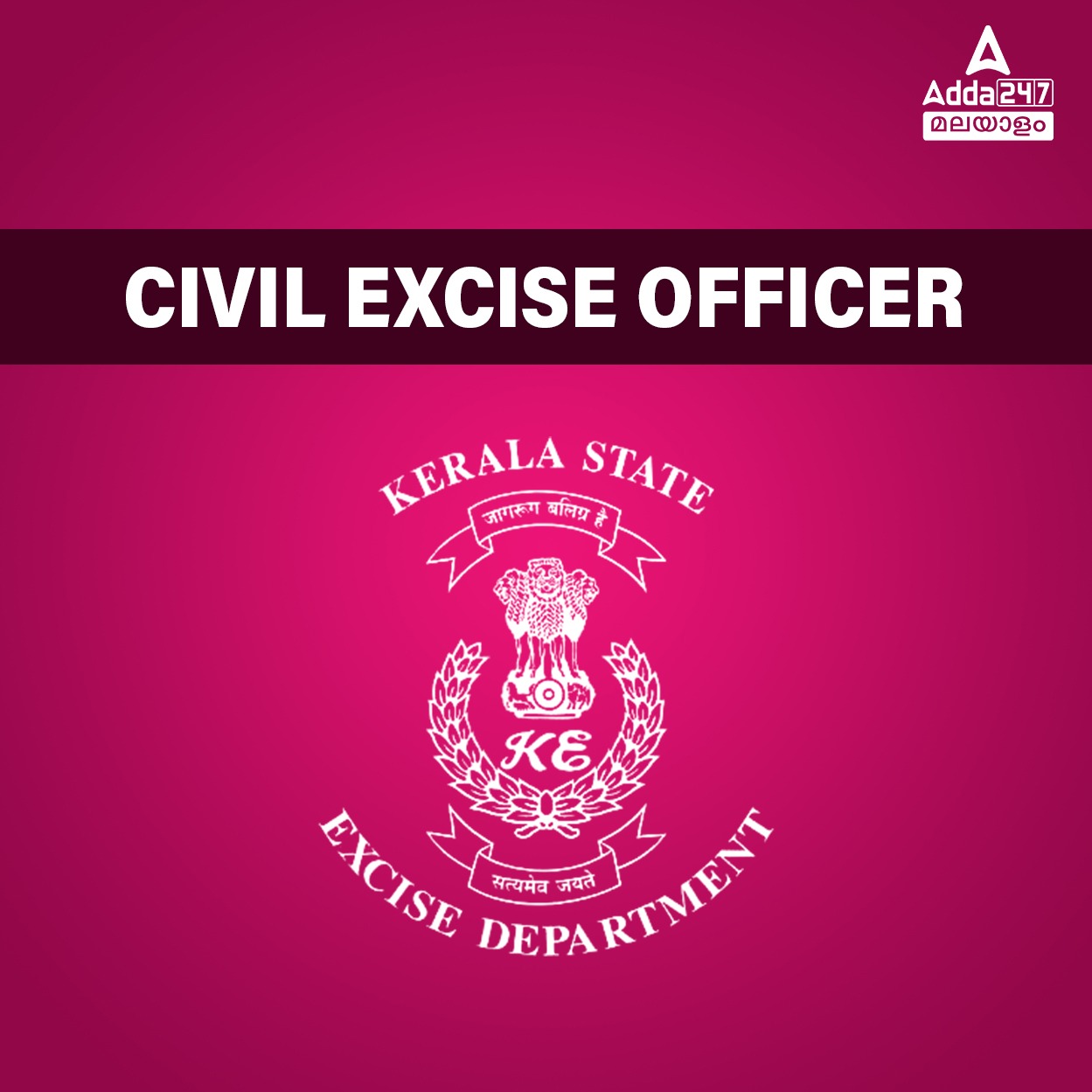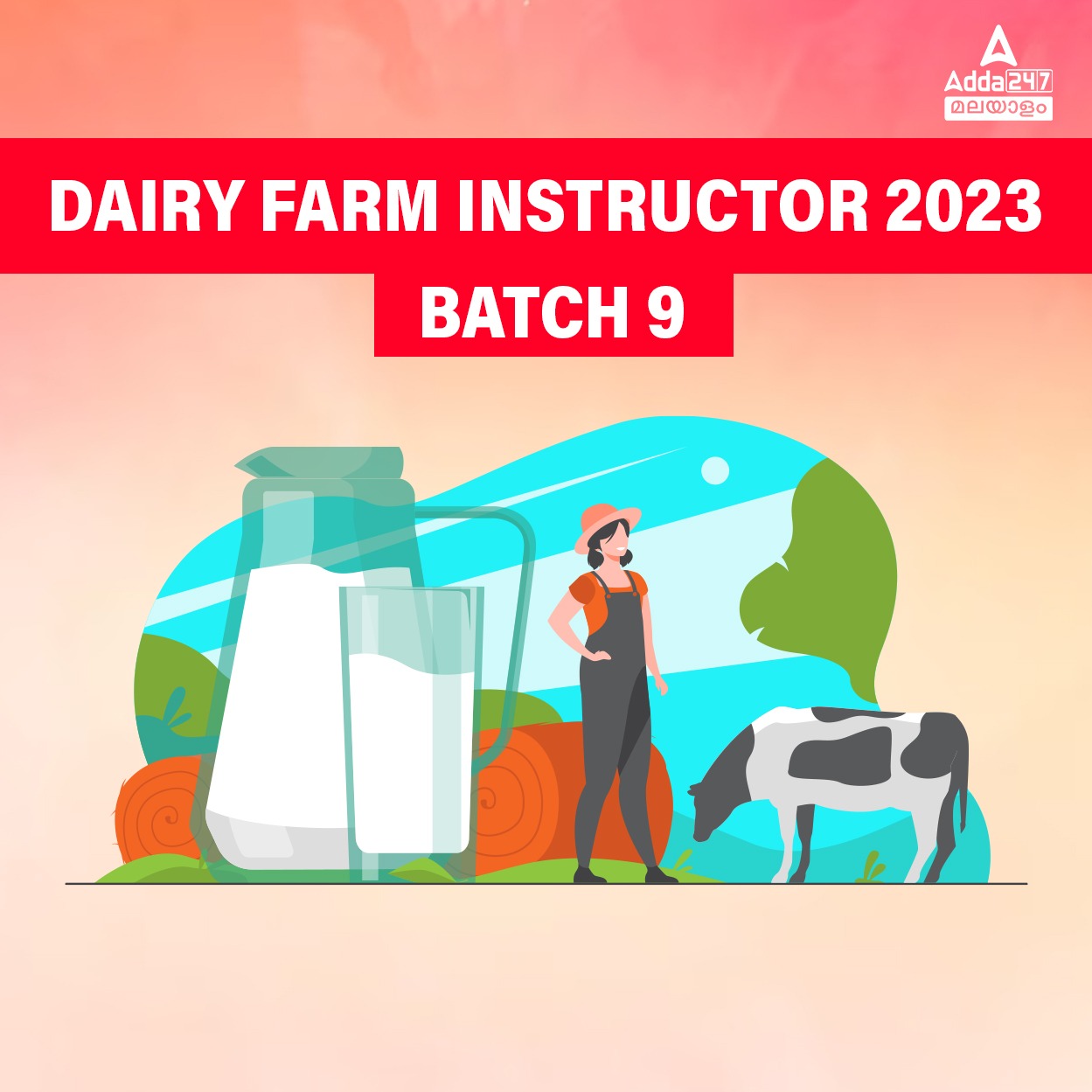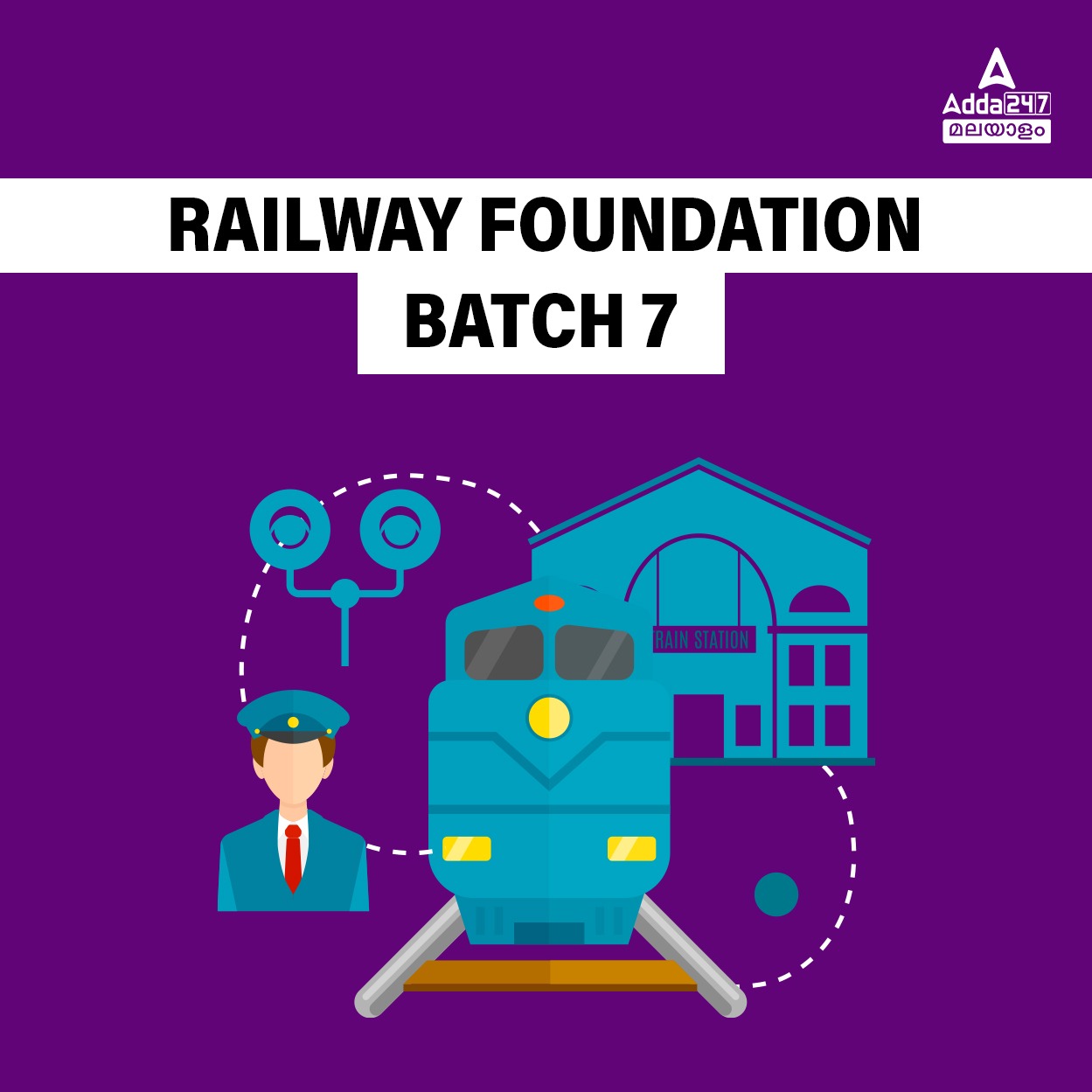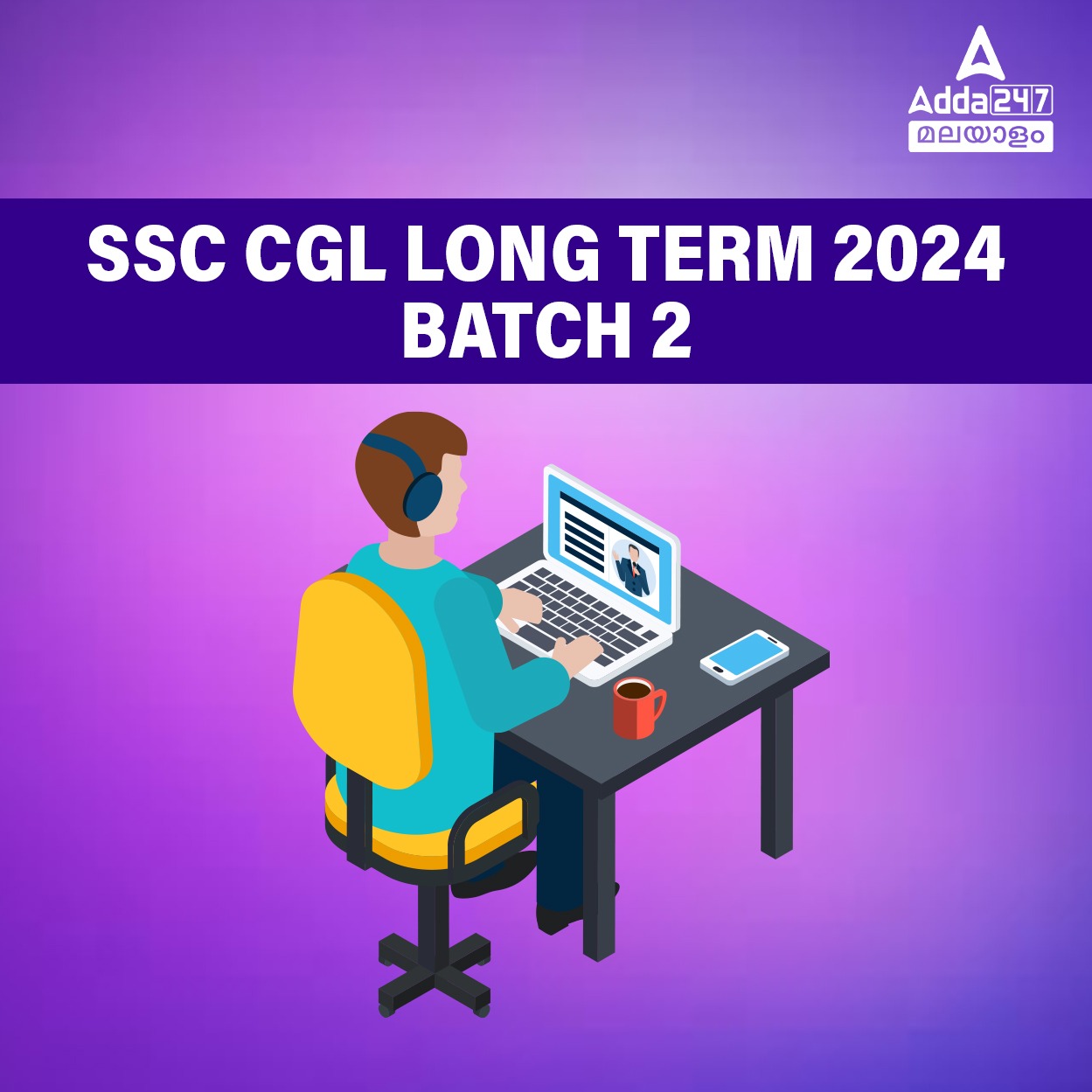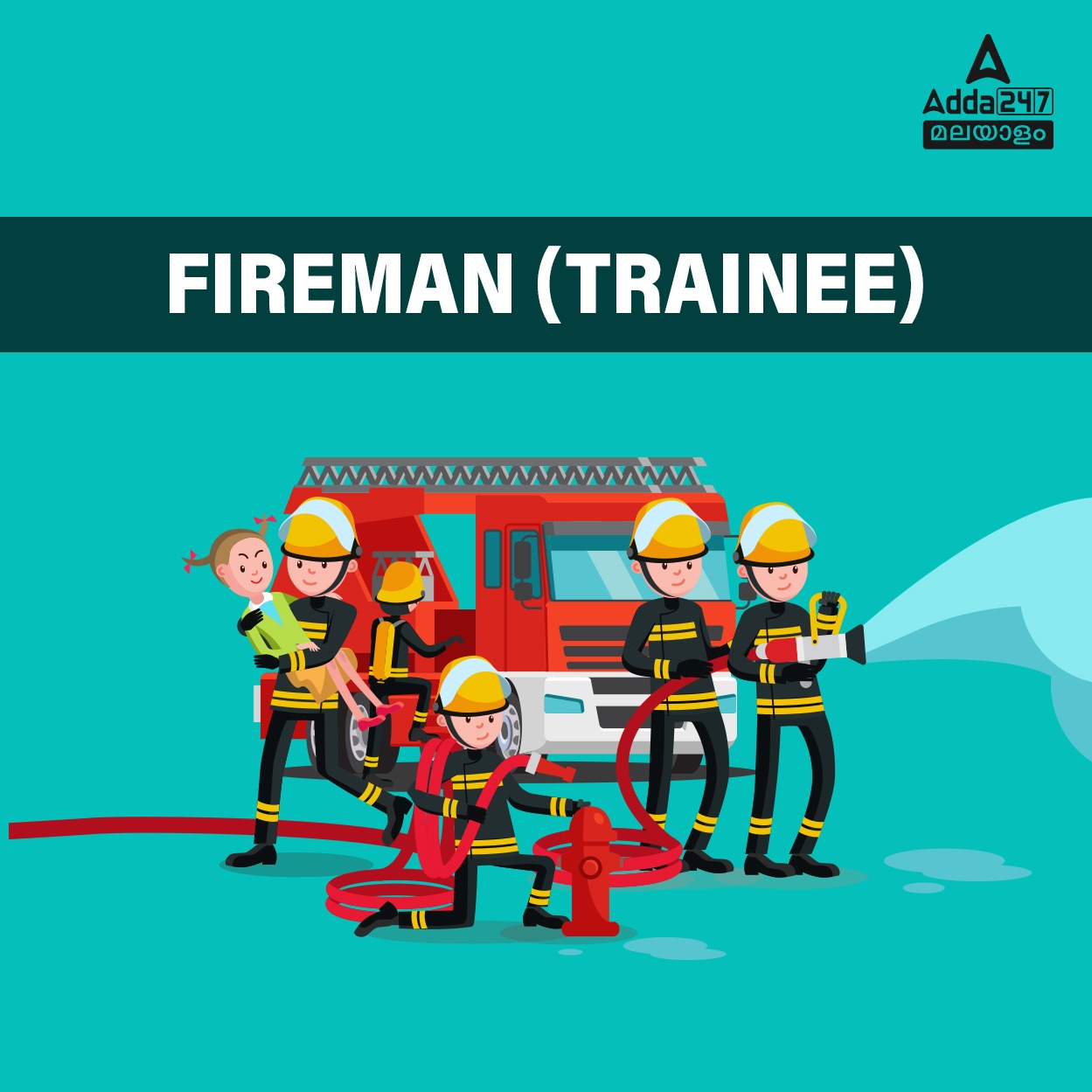Table of Contents
കേരള PSC ഓവർസിയർ, ഡ്രാഫ്റ്റ്സ്മാൻ ഗ്രേഡ് II സിലബസ് 2023
കേരള PSC ഓവർസിയർ, ഡ്രാഫ്റ്റ്സ്മാൻ ഗ്രേഡ് II സിലബസ് 2023: കേരള പബ്ലിക് സർവീസ് കമ്മീഷൻ കേരള PSC ഓവർസിയർ, ഡ്രാഫ്റ്റ്സ്മാൻ ഗ്രേഡ് II സിലബസ് പുറത്തിറക്കി. പരീക്ഷയ്ക്കുള്ള തയ്യാറെടുപ്പുകൾ ആരംഭിക്കാൻ സമയമായി. പരീക്ഷയിൽ വിജയിക്കുന്നതിന്, സിലബസിനെക്കുറിച്ച് വ്യക്തമായ ധാരണ ഉണ്ടായിരിക്കണം, അതിനാൽ കേരള PSC ഓവർസിയർ/ഡ്രാഫ്റ്സ്മാൻ ഗ്രേഡ് II സിലബസ് 2023 വിശദമായി വായിച്ച് മനസിലാക്കുക. നിങ്ങൾക്ക് ഓവർസിയർ ഗ്രേഡ് II/ഡ്രാഫ്റ്സ്മാൻ ഗ്രേഡ് II 2023 PDF രൂപത്തിൽ ഡൗൺലോഡ് ചെയ്യാം.
ഓവർസിയർ ഗ്രേഡ് 2/ഡ്രാഫ്റ്റ്സ്മാൻ ഗ്രേഡ് 2 പരീക്ഷ സിലബസ് 2023: അവലോകനം
ചുവടെ നൽകിയിരിക്കുന്ന പട്ടികയിൽ ഓവർസിയർ ഗ്രേഡ് 2/ഡ്രാഫ്റ്റ്സ്മാൻ ഗ്രേഡ് 2 പരീക്ഷ സിലബസ് 2023 സംബന്ധമായ എല്ലാ പ്രധാനപ്പെട്ട വിവരങ്ങളും ലഭിക്കും.
| ഓവർസിയർ ഗ്രേഡ് 2/ഡ്രാഫ്റ്റ്സ്മാൻ ഗ്രേഡ് 2 പരീക്ഷ സിലബസ് 2023 | |
| ഓർഗനൈസേഷൻ | കേരള പബ്ലിക് സർവീസ് കമ്മീഷൻ |
| കാറ്റഗറി | പരീക്ഷ സിലബസ് |
| പരീക്ഷയുടെ പേര് | കേരള PSC ഓവർസിയർ ഗ്രേഡ് 2/ഡ്രാഫ്റ്റ്സ്മാൻ ഗ്രേഡ് 2 പരീക്ഷ |
| വകുപ്പ് | കേരള ലാൻഡ് ഡെവലപ്മെന്റ് കോർപ്പറേഷൻ ലിമിറ്റഡ് |
| തസ്തികയുടെ പേര് | ഓവർസിയർ ഗ്രേഡ് 2/ഡ്രാഫ്റ്റ്സ്മാൻ ഗ്രേഡ് 2 |
| കാറ്റഗറി നമ്പർ | 304/2021 |
| പരീക്ഷാ മോഡ് | OMR |
| ആകെ മാർക്ക് | 100 |
| ചോദ്യങ്ങളുടെ ആകെ എണ്ണം | 100 |
| ചോദ്യങ്ങളുടെ മാധ്യമം | ഇംഗ്ലീഷ് |
| പരീക്ഷയുടെ സമയപരിധി | 1 മണിക്കൂർ 30 മിനിറ്റ് |
| ഔദ്യോഗിക വെബ്സൈറ്റ് | https://www.keralapsc.gov.in/ |
Fill the Form and Get all The Latest Job Alerts – Click here
ഓവർസിയർ ഗ്രേഡ് II/ഡ്രാഫ്റ്റ്സ്മാൻ ഗ്രേഡ് II പരീക്ഷാ പാറ്റേൺ 2023
കേരള പിഎസ്സി ഓവർസിയർ/ഡ്രാഫ്റ്സ്മാൻ ഗ്രേഡ് II പരീക്ഷയുടെ വിശാലമായ മാതൃക ഇതാണ്:
- ഒബ്ജക്ടീവ് അടിസ്ഥാനത്തിലുള്ള പരീക്ഷയാണിത്.
- ആകെ 1.30 മണിക്കൂറാണ് പരീക്ഷാ ദൈർഘ്യം.
- ആകെ മാർക്ക് 100.
- ഓരോ ശരിയായ ഉത്തരത്തിനും 1 മാർക്ക് നൽകും.
- ഓരോ തെറ്റായ ഉത്തരത്തിനും 1/3 മാർക്ക് കുറയ്ക്കുന്നു.
| ഓവർസിയർ ഗ്രേഡ് II/ഡ്രാഫ്റ്റ്സ്മാൻ ഗ്രേഡ് II പരീക്ഷാ പാറ്റേൺ 2023 | ||
| Modules | Topics | Marks |
| Module I | Surveying I | 10 Marks |
| Module II | Surveying II | 10 Marks |
| Module III | Construction Materials | 10 Marks |
| Module IV | Construction Technology | 10 Marks |
| Module V | Theory of Structure | 10 Marks |
| Module VI | Quantity Surveying | 10 Marks |
| Module VII | Irrigation Engineering | 10 Marks |
| Module VIII | Geotechnical Engineering | 10 Marks |
| Module IX | Transportation Engineering | 10 Marks |
| Module X | Environmental Engineering | 10 Marks |
ഓവർസിയർ/ഡ്രാഫ്റ്റ്സ്മാൻ കേരള PSC സിലബസ് PDF ഡൗൺലോഡ്
ഓവർസിയർ/ഡ്രാഫ്റ്റ്സ്മാൻ കേരള PSC സിലബസ് PDF ഡൗൺലോഡ് ചെയ്യാൻ, താഴെ നൽകിയിരിക്കുന്ന ലിങ്കിൽ ക്ലിക്ക് ചെയ്യുക.
ഓവർസിയർ/ഡ്രാഫ്റ്റ്സ്മാൻ കേരള PSC സിലബസ് PDF ഡൗൺലോഡ്
ഓവർസിയർ Gr. II/ഡ്രാഫ്റ്റ്സ്മാൻ Gr. II സിലബസ്
Module I: Surveying I
- Principles of surveying, Classification of Surveying, Different Types of Chain and Tape. The factors involved in selecting stations. The different operations in Chain surveying. List the errors in chaining, and list the obstructions in chaining.
- The principles of plane table surveying, The functions of accessories of the plane table- list the operation to set up and orientation in the plane table surveying- the methods of plane table surveying.
- List the types of the compass- identify the parts of the Prismatic compass and their functions- define bearing the concept of meridian and types of Meridian, the method of booking of field notes. Calculate reduced bearing from whole circle bearings problem- Calculate the included angles from whole circle bearings, understand magnetic dip and declination. List the sources in errors in compass surveying.
- Define leveling- understand the concept of Level surface, datum, and horizontal surface, vertical surface, and reduced level- the benchmark and its types understand the method of reduction of Level Rise and fall method and height of collimation method- classification of levelling contouring. (10 Marks)
Module II: Surveying II: Define the terms used in theodolite survey
- List the uses of the theodolite. Explain the temporary adjustments of the theodolite. List the types of traverse. The types of co-ordinates- consecutive and independent co-ordinates, calculate the independent co-ordinates. Gales traverse table, the methods of balancing the traverse- Bowditch’s rule and transit rule. The principle of Trigonometric levelling. The classification of tachometry, Explain the principle of stadia tachometry and the constants of stadia tachometry.
- Explain the different types of curves- simple curve, compound curve, transition curve, and vertical curves. Explain the transition curve. The elements of a simple circular curve. The data is required to set out a circular curve.
- The different parts of equipment like an electronic theodolite, Total Station, and GPS. The uses and advantages of electronic theodolite, total station, and remote sensing and its application in the civil engineering field. The fundamentals of GPS, receiving, observation, and the transformation of GPS Results (10 Marks)
Module III: Construction Materials
- Stone- Classification geological, physical, and chemical classification- characteristics of good building stone- varieties of stones- granite- trap- basalt- sandstone- Laterite. Value of, the load-bearing capacity of stones. Quarrying of stones- methods- wedging and blasting- explosives used. Dressing of stones.
- Clay Products- Bricks: Raw materials used- Composition of brick earth, manufacturing methods (Description only), kiln and clamp burning- IS specification of bricks- characteristics of good brick used for building propose.
- Tiles: type of tiles- characteristics- uses, floor wall and roofing tiles, porcelain, vitrified, and glazed tiles. earthenware and stoneware pipes- uses qualities cement- composition- compounds present- manufacturing methods characteristics of cement- types of cement properties test on cement consistency test final test gravity test setting time test soundness test field test use of cement
- Aggregates: sand- sources of sand rivers and sea sand and pits and limitations of mining of sand from rivers and sea shore, M sand alternatives of sand,
- Course aggregates: materials generally used requirements of good course aggregates commonly used sizes for different applications grading of course and fine aggregate
- Cement concrete proportioning ingredients PCC and RCC water cement ratio effects on strength and workability characteristics of concrete and reinforcements preparation workability test on cement concrete laboratory test field test slum test compaction factor test qualities of Water used for mixing very enforced cement concrete qualities of materials types of reinforcement used characteristics of reinforcing material preparation of concrete cubes and test on cube chemical admixtures plasticizers and superplasticizers.
- Timber and wood products structural classification softwood and hardwood defects and timber seasoning of timber preservation of timber wood products plywood MDF hdf veneer metals ferrous metals wrote iron cost iron mill Steel special Steels high carbon steel high tensile Steel stainless steel properties in uses only non-ferrous metals aluminium copper lead zinc and Titanium important alloys properties and uses (10 Marks)
Module IV: Construction Technology
- Masonry: classification of masonry walls- load bearing, non-lot bearing, and retaining walls; stone masonry brick masonry later like masonry composite masonry different types of stone masonry general principles and specifications of stone masonry as per relevant quotes Brick masonry different types of bonds for ball fires and junctions of walls or equal and unequal thickness English flemish single and double flemish pacification for brick masonry as per relevant quotes hollow block masonry types of hollow blocks used in construction and methods of construction advantages and disadvantages with reference to other types of nation solid block masonry and interlocking block masonry partition walls type materials requirements modern methods of construction frame prefabricated earthquake resistant
- Damp proof courses definition of dampness causes and effects methods of prevention surface treatment internal waterproofing courses pre-stressed concrete principle of pre-stressing types internal and external and different methods pre-tensioning and post-tensioning prestressed slabs and beams formwork functions materials used requirements of good formwork modern trends in material and Technology slip forms PVC forms get holding soring and underpinning definition purpose and function requirements of materials used plastering and Pointing materials and proportion function general specifications types
- Building components: different components of the building from the Foundation to the roof and their functions foundations functions classification Shallow deep types spread putting wrapped mat column putting Payal Foundation well Foundation flooring requirements of good floor materials used for flooring floor finishes types mosaic marble granite ceramic tiles vitrified tiles glass wooden and other types of modern floor finishes. Doors and windows positioning of doors and windows with respect to lightening and ventilation types and size as per relevant quotes special types of Doors flush revolving and collapsible rolling and sliding windows different types of ventilators different types of fittings for doors and windows lintels in Sun shapes types of lintels wooden stone break RCC and rs.j lentils Sun sheets canopy and sun breakers Arches types terms used vertical transportation stairs staircases: location – types – standards for staircase as per KBR – trade, rice, going, Riser nosing – with stair – head room – flight – landing – handrills. lift and escalators – component parts and requirements as per NBC and escalators – planning and location – component parts of their case and lift – types of staircase. feeling materials used for ceiling – false ceiling.
- Roof: definition – the importance of roofing with respect to climatic conditions – classification – pitched and Flat dash couple closed and collar roof. different types of dresses for pitched roof Dash would in steal trusses dash roof covering for pitch roof – AC sheets, ji call you to get sheets aluminum sheets – PVC sheets – method of arranging and fixing to the beaten after CC roof – flat and slope slabs Dash flat slab construction – whether proof course to flat room. requirements of good floor finish selection of materials ceiling colon types of good ceiling selection of materials. (10 Marks)
Module V: Theory of Structure
- Definition of force – types of forces moment of force – types of moments – the principle of moments – determination of reaction of simply supported beams and over hanging beams with point loads uniformly distributed loads uniformly varying loads.
- Centroid of plain figures – determination of centroid of rectangle triangle circle semi-circle and compound areas in remainders definition of center of gravity CG of a combination of simple solids
- Elasticity stiffness plasticity toughness brittleness ductility malleability and hardness simple stresses and strains – types of stresses that she elasticity – hooks law – Young’s modulus dash stretches in strange in uniform sections of same and composite materials like steel aluminum and copper and stress-strain curve and limit proportionality ultimate stress breaking stress working stress and factor of safety.
- Beams and bending classification overhanging and continuous types of loading concentrated uniformly distributed uniformly wearing load shed force and bending moment definition and fine convention calculation of SF and BM for canteen Lever simply supported and overhanging beings and sketching of SF and BM diagrams (4 point load uniformly distributed load uniformly wearing load and combinations of UDL and point loads relation between SF and BM maximum, BM point of contra flexure
- Theory of pure torsion assumption in pure torsion derivation of formula – problems power transmitted by circular Sharks – problems things tenders failure of things cylindrical shell due to internal pressure – circumference and longitudinal stresses –changes in dimension and volume of thin cylinders due to internal pressure.
- Theory of simple bending, explain the terms neutral axis movement of resistance and section modules. Assumptions in simple bending, Derivation of equation of simple bending apply the theory of simple bending and compound sections calculate stress section modulus and moment of resistance calculate the share stress and draw the shares stress distribution diagram for rectangular and I section (10 Marks)
Module VI: Quantity Surveying
- Quantity surveyor duties of quantity surveyor essential requirements of quantity surveyor estimate types detail estimate supplementary estimate revised estimate annual repair and maintenance a proximate estimate types of approximate estimate problems units of measurements for different items as per standard Sunrise lump sum lead and left contingencies unforeseen items work charged establishment- Earthwork computation trapezoidal midsection mean section trapezoidal prismoidal formula computation of earthwork from longitudinal section and cross-section no travers slope capacity of Reservoir from Contour map
- Different methods of taking out quantities Centre line method long wall short wall method compute quantities Of a compound wall steps doors Windows ventilator
- Cost of materials at source and its side conveyance charges standard Data Book schedule of praise lump sum items extra labour contractors profit conveyance statement for different materials Schedule of Rates labour and materials analysis of Rates preparation of standard data of CPWD with specification as per CPWD standard rules of measurements rules regarding tolerance of wastage of materials general rules for taking measurements for CPWD standard Abstract of estimate preparation of an abstract of estimate
- Detailed estimate preparation for building With gabbled roof building with hipped roof building with Valley to store it building residential and office Abstract of estimate preparation for building with gabbled Ho building with height roof building with Valley to store it building residential and office detailed estimate and abstract of estimate for septic tank and soap pit estimate.
- A detailed estimate of RCC beam slab column and preparation of far bending schedule detail estate details for various items of earthwork excavation Foundation concrete machinery work DPC formwork are RCC plastering pointing flooring painting and pollution I RC specification for WBM road preparation of plan estimate and other documents for submission
- Definition of valuation purpose factor governing valuation life of structure type location maintenance legal control crap values Salvage value market value book value thinking fund annuity and depreciation. methods of valuation rental method direct comparison with cost based on Profit development method of valuation depreciation method calculation of depreciation by different methods land valuation problems (10 Marks)
Module VII: Irrigation Engineering
- Fundamentals of irrigation hydrology basic methods of irrigation Nature and scope of irrigation engineering definition of irrigation necessity of irrigation advantages and disadvantages perennial and inundation irrigation flow and left irrigation direct and storage irrigation water requirement of crop a) principle crops Dash kharif and Rabi crops in India and Kerala dash dry and wet crops – crop period b) duty – different methods of expressing duty – period – relationship between duty and delta factors affecting duty – requirements for precise statement of duty duty figures for principal crops dash simple problems on duty hydrology that run off and maximum discharge of a catchment a) Rainfall types of rain gorgeous factors for selecting suitable site for rain gauge station Precautions in setting and maintaining rainfall records rainfall cycle average annual rainfall of an area methods of estimating average rainfall over a catchment Thiess’s polygon method b) catchment basin and catchment area characteristics of catchment good average bad free catchment interceptor catchment run off factors affecting run off- nature of catchment run of Coefficient methods of estimating run of empirical formulae c) river gorging important site selection open gauge well measurement of velocity by surface floats velocity rods and current metre d) maximum flood discharge from rainfall records Ryve’ s and Dicken’s formulae, H F L marks, gauge reading.
- Diversion head works a) classification of head works storage and diversion had works their suitability under different conditions suitable site for diversion works- brief description of component parts of a weir. b) Barrage and weirs. c) head regulator scouring sluice blood bands and other protective works d) Percolation- percolation Gradient uplift pressure effect of percolation on irrigation works uplift pressure and exit velocity scour protective works solid and loose aprons
- Storage head works- a) dams types selection of side types of survey for site selection factors influencing inside selection site investigation describe the terms full Reservoir level maximum water level top Bond level that storage live storage freeboard. b) evaporation evaporation losses in reservoirs c) dams rigid and non-rigid dams main types gravity dam forces acting on a gravity dam failure of gravity dams in remedial measures elementary profile limiting height of dam load dam and high Dam free board and top width sketch practical profile of low Dam drainage gallery construction joins and their functions spill ways d) Earth dams situations suitable for earth dance types of earth dance causes of failure of earth dams and precaution saturation gradient and line drainage arrangement of an Earth dam. e) Tank sluices Head wall Tower head type regulating arrangements tank surplus works necessity suitable site flash escapes surplus weirs.
- Irrigation canals and soil erosion: distribution works a canals classification typical cross-section of the canal in cutting embankment partial cutting and embankment berms standard dimensions balancing depth of cutting region channel necessity and types of canal lining maintenance of canals. b) Canal regulation sluice drops escape and their functions c) cross drainage works necessity general description of aqueducts super passage Under tunnel siphon level crossing inlet and outlet d) soil erosion causes and effects of soil erosion methods of prevention of soil erosion (10 Marks)
Module VIII: Geotechnical Engineering
- Introduction of soil mechanics soil engineering scope of soil engineering history of development of soil mechanics soil types residual and transported soil as a three-phase system water content Unit Weight of soil bulk Unit Weight dry Unit Weight Unit Weight of solids saturated Unit Weight submerge unit weights specific gravity void ratio porosity degree of saturation Percentage air voids air content density index functional relationships Estimation and relationship between properties determination and index properties water contain by oven drying methods specific gravity using Pycnonmeter and specific gravity bottle practical size distribution see when analysis hydrometer method practical size distribution curve consistency of soils liquid limit plastic limit string case limit plasticity index consistency index determination of liquid limits plastic limit and limit shrinkage ratio field density by sand replacement method and the core Carter method classification of soil engineering properties of soil shear strength for permeability compressibility necessity I S classification
- Soil water classification absorbed water capillary water stress condition and soil effective and neutral pressure permeability of soil that Darcy’s law discharge velocity and seepage velocity factors affecting permeability determination of coefficient permeability constant head permeability test falling head permeability test coefficient of permeability estimation problems. compaction of soil definition and objectives of compaction standard Proctor test and modified proctor test concept of OMC and maximum dry density zero air voids line field compaction methods and factors affecting compaction
- Site investigation and subsoil Exploration objectives site reconnaissance site exploration Depth of exploration number and disposition of pits and boring general exploration detailed exploration methods of site exploration open excavations boring methods auger boring auger and shell boring- wash boring percussion boring Rotary boring soil samples in samplers disturbed Sampling and disturb sampling standard penetration test geophysical methods ( seismic refraction and electrical resistivity method) bearing capacity ultimate bearing capacity safe bearing capacity allowable bearing pressure generally and local shear failure Terzaghi’s Theory of bearing capacity effect of water table plate load test and limitation
- Foundation Engineering- different types of foundations proportioning of foundations rectangular putting design of strip putting using Rankine’s equation deep Foundation file Foundation necessity of fire Foundation classification of files according to materials mode of transfer of load method of installation used in the displacement of soil well foundations/ caissons shapes of Wells and component parts- Well sinking tilts and shifts measures for rectification of tilts and shifts. (10 Marks)
Module IX: Transportation Engineering
- Highway Engineering: history of road development in India row importance of roads and inter-model mix of traffic recommendations of Jaya kar Committee report and its implementation Road plans in India salient features of current road plan. IRC- IRC classification of road urban Road classification major s h and NH in Kerala investigation and planning of highways details project report for project different types of surveys Engineering surveys and traffic surveys the Es in traffic management engineering surveys map study Reconnaissance survey Preliminary surveys final location surveys road alignment factors to be considered in road alignment socio-economic studies and environmental impact assessment drawings to be included in road Project traffic Engineering traffic volume studied traffic intensity studies OD studies Road intersection studies site distance topping and overtaking site distances Road structures Kerb medium dividers channelizing Island pedestrian loading islands Rotary Island inter section types of at grade intersection grade separate intersections clover leaf junction trumpet Junction road markings traffic signals purpose of signals the type of signals Mandatory cautionary and informatory signals
- Highway geometrics road structure subgrade subways course base course and wearing course pavement Highway with carriageway shoulders formation with right of way arboriculture cross section of road on level ground and Bank mint cutting partially cutting and filling Road slopes camber gradient types of gradient ruling limiting and exceptional gradients super elevation and widening of road on curve curves horizontal and vertical curves and their types Road drainage surface and sub surface drainage catchment/ intersecting dreams road construction Earth work for road forming the formation with coil bank and borrowed balancing of earthwork compaction of subgrades construction of earthen road water bound Macadam Road materials used construction of WBM road Construction of bituminous Road Prime Coat and Tag Coat premix macadam and penetration macadam Seal Coat bituminous macadam Road maintenance Using cut back/ emulsion and hot premix naked dance flexible payment and rigid pavement introduction importance of Railways classification of railway based on gauge permanent way component of permanent way formation ballast functions and materials used real types rail joins types requirements of good joint fixtures and fasteners fish plates and bolts pandrol clip Clippers materials used oning of wheel adzing of sleepers- cross section of a b g single and double line in cutting and embankment. playing and maintenance plate laying definition methods points and crossing points crossing turn out diamond crossing station yards station yard marshaling yard goods yard shunting yard loco yard. Signaling and interlocking objectives of signaling types of signal modern signaling methods principles of interlocking.
- Bridge and culvert- types of bridges and culverts based on materials used HFL position of deck slab, alignment and IRC classification Foundation types of foundations used for Bridge well and pile Foundation sub structure abutment pier and wing wall- different types superstructure Bridge bearing girder beams deck slab RCC beam Bridge plate girder Bridge Steel trust Bridge arch bridge and bow string girder- Parapet/ Hand Rail. Approach Road function different types of approach Road alignment of bridge types and economical span linear waterway afflux and vertical clearance- permissible velocity scour depth prevention of scour bridge project surveys plans and documents a selection of side for Bridge tunnel engineering necessity of tunnels and its uses parts of a tunnel audit tunnel vertical shop common shapes tunnel lining typical section of a tunnel airport engineering classification of airport layout of an airport and location requirements airport components Runway, Apron, terminal building hangers cargo fuelling facility Fire fighting parking and circulation area- Runway alignment pattern and layout of bridge and culvert. types of bridges and covered based on material use HFL position of deck slab alignment and IRC classification. Foundation types of foundation used for Bridge well and pile Foundation sub structure abutment pier and wing wall- different types of superstar beams like RCC being Bridge plate girder Bridge Steel trussed Bridge Arch bridge and bostring girdle parapet/handrail. approach Road function different types of approach Road alignment alignment of bridge types economical span linear waterway afflux and vertical clearance permissible velocities scour death prevention of scour bridge project service plans and documents selection of side for breeds tunnel engineering necessity of tunnels and its uses parts of a tunnel audit tunnel vertical shop common shapes tunnel lining typical section of a tunnel. (10 Marks)
Module X: Environmental Engineering
- Water supply engineering: general importance of water supply development of water supply different systems of water supply need for protect water supply estimating water requirement total quantity of water for a town per capita demand and factors affecting demand water requirement for domestic purposes industrial use fire fighting commercial and industrial needs public use variation in demand peak demand during day month and year 4 casting population by arithmetical geometrical and incremental increase method (problems)
- Sources of water surface source place and impounded reservoirs yield from surface source underground sources springs wells infiltration wells and galleries. Yield from Where’s test for yield conveyance of water types of Index Reservoir intake river intake Canal intake open channels aqueduct pipes list of pipe materials CI pipes steel pipes concrete pipes AC pipes gi pipes plastic and PVC pipes hide density polythene pipes merits and demerits of each type pipe joints spigot and socket joint flange joint expansion joint for CI pipes joints for concrete and asbestos cement pipe methods of leak detection prevention rectification pipe corrosion causes and prevention
- Purification of water quality of water impurities of water need for laboratory test Sampling and testing of water physical chemical and bacteriological tests test various standards of water such as PH value colour taste hardness odor for Potable water- Flow diagram of different treatment units for both surface and ground sources reservoir/ pond and well aeration methods of aeration sedimentation plane sedimentation and sedimentation by coagulation filtration construction and operation of source and rapid sand and pressure filters disinfection of water necessity and method chlorination free chlorination breakpoint chlorination super chlorination removal of Taste colour odor and hardness distribution system: general requirements system of distribution gravity system combined system direct pumping methods of supply intermitted and continuous advantages and disadvantages lay out of distribution system there where its and demerits and their suitability appurtenances in distribution system uses of sluice valves check valves or reflex valves or blow off valves, scour valves fire hydrants and water metres- water supply arrangements in building definition of terms water means service by communication pipe supply pipe distribution pipe air gap general layout of water supply arrangements for single and multi storage building as per is code of practice general principles and Precautions in laying pipeline within the premises of a building connection from water Main To building.
- Sanitary engineering Objects of providing sewerage works definition of terms sewage sewerage sewer Refuse garbage sullage etc- systems of sewage disposal conservancy and water carrier systems types of sewerage systems and their suitability separate combined and partially separate quantity of sewage quantity of discharge in sewers dry whether flow variable to flow limiting velocity is a sewers surface drainages requirements shape different shapes of cross section for fever rectangular circular egg-shaped- Merits and demerits of each brief description and choice of type of sewers stoneware cast iron, cement concrete precast sewers AC pipe sewer appurtenances Location function and construction of manholes drop manholes catch basins, flush tanks, and inverted siphons. The necessity of pumping sewage location and component parts of pumping station sewage characteristics strength of sewage sampling of sewage characteristics of sewage physical chemical and biological significance of the following test for solids oxygen demand BOD COD Ph value chlorides.
- Sewage treatment and disposal preliminary treatment brief description and functions of screens skimming tanks in grid Chambers primary treatment brief description and functions of plain sedimentation secondary treatment brief description of trickling filters activated sludge process secondary clarifier and sludge digestion drying disposal miscellaneous treatment septic tank imhoff tank calculation of dimension of a septic tank from a given data sewage disposal dilution disposal online oxidation points oxidation ditch aerated lagoons and aerobic lagoons drainage and sanitation in building Traps water closets, flushing cisterns Urinals inspection Chambers anti siphonage pipe. Rural sanitation and sanitary laterals brief description of operation details of biogas plants using cow dung night soil and agricultural waste pollution control board the functions with respect to monitoring and control of air and water pollution (10 Marks)
| RELATED ARTCLES |
| Kerala PSC Overseer KSCDC Syllabus 2023 |
| Kerala PSC Overseer Grade 2 Exam Syllabus 2023 |
| Kerala PSC Field Assistant Syllabus 2023 |

